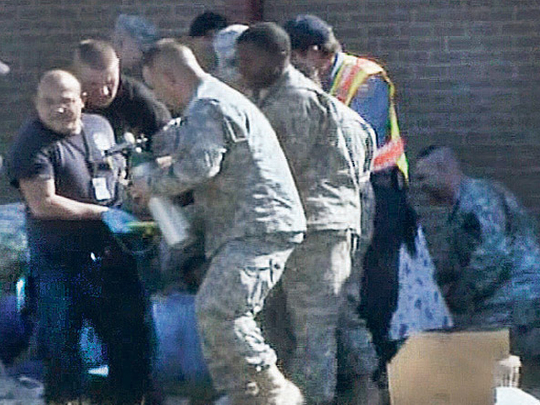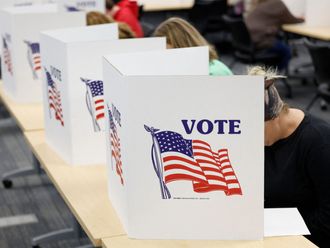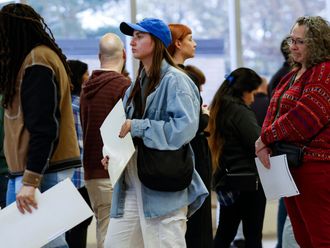
Washington : One was a drywall contractor and father, another a petite woman who cared for the elderly, another a US military officer. The most alarming thing about a string of recently arrested terror suspects is that they are all Americans.
Click here to know more about the suspects of terror-related activities
Over the past week, a Pennsylvania woman accused in a plot to kill a Swedish cartoonist, and a radicalised New Jersey man held by authorities in Yemen, have become the latest cases among more than a dozen Americans either captured or identified by the US government and its allies over the past two years for actively supporting jihad, or holy war.
Some, according to prosecutors, were inspired by the US involvement in the Iraq and Afghanistan wars. Others, such as the accused Pennsylvania woman, wanted to avenge what they considered an insult to the Prophet Mohammad (PBUH). Many travelled overseas to get terrorist training. Some used home computers to foment plots.
There is no evidence that these cases are connected in any way. But they underscore the new reality that there is a threat from violent extremism from within the United States. It is difficult to say whether the rise in cases is because law enforcement has got better at catching suspects or if there are simply more to catch.
Subway bomb plot
Most of the cases ended with suspects captured before they could act on their plans. But some were nearly ready to spring to action, such as Queens resident Najibullah Zazi, 24, who pleaded guilty in February as the leader of a plot to bomb the New York subway system.
And law enforcement was too late to prevent a shooting rampage in December on the military post at Fort Hood, Texas. Army Major Nidal Hassan, 39, a US-born Army psychiatrist of Palestinian descent, is charged with killing 13 people.
Determining how quickly a suspected home-grown terrorist goes from adopting extremist rhetoric to becoming a suicide bomber is also a challenge to law enforcement. Some people never make that leap. Others do it in a matter of months or years.
"Individuals can be radicalised in a number of ways — by direct contact with terrorists abroad or in the United States, over the internet or on their own through a process of self-radicalisation," said Assistant Attorney-General David Kris, the top counterterrorism official at the Justice Department.
These cases, Kris said, "underscore the constantly evolving nature of the threat we face".
For years US officials have predicted there would be a rise in home-grown terrorism. "Now we're beginning to see the predictions coming true," said Michael Chertoff, the former Homeland Security secretary.
Because of this, Chertoff said, it is critical for communities to be on the lookout for unusual behaviour. Law enforcement, he added, needs to continue to educate people on the differing signs of terrorism.
There is no single reason people drift towards terrorism.
Time factor
"It's a combination of psychology, sociology and people who, just for cultural reasons, gravitate" to extremism, Chertoff said. "We can't assume we've got months and years."
Colleen LaRose, the Pennsylvania woman who allegedly met violent jihadists online under the name ‘JihadJane', took only months. LaRose, according to her boyfriend, never showed religious leanings during the five years they dated. Then, her boyfriend came home last summer and she was gone.
In a June 2008 YouTube video, the blonde-haired, green-eyed woman who had embraced Islam said she was "desperate to do something somehow to help" ease the suffering of Muslims, federal prosecutors allege.
Some home-grown terrorists take much longer to show their militant leanings. In the case of North Carolina drywall contractor Daniel Boyd, federal prosecutors say he nursed his ambitions for jihad over decades.
Boyd is accused of leading a group of men — including two of his sons — who planned to kidnap, kill and maim people in other countries in the name of jihad. One of Boyd's neighbours said he didn't think Boyd was a terrorist. "If he's a terrorist, he's the nicest terrorist I ever met in my life," Charles Casale said.
Boyd decried the US military, praised the honour in martyrdom, bemoaned the struggle of Muslims and said "I love jihad" on audio tapes obtained by federal authorities.
Even when law enforcement officials know about an American's interaction with suspected terrorists, they may not have enough information to act on it.
Disaffected
It is not a new concept for Americans to join the jihadi cause. In 2001, John Walker Lindh was arrested in Afghanistan for fighting with the Taliban. Raised Catholic, the California native was 12 when he saw the movie Malcolm X and became interested in Islam. A few years later, the teenager who liked hip-hop music embraced Islam.
There are disaffected, alienated people everywhere in the United States who, for decades, have joined gangs and cults in search of an identity. Islamist groups are yet another destination for those who seek purpose in their lives, experts say.
The spate of cases over the past two years shows the conventional wisdom about who is a terrorist is dangerously outdated, said Bruce Hoffman, a terrorism expert at Georgetown University.
"There really is no profile of a terror suspect... the profile is broken," said Hoffman. "It's women as well as men, it's lifelong Muslims as well as converts, it's college students as well as jailbirds."
See also Page 30












